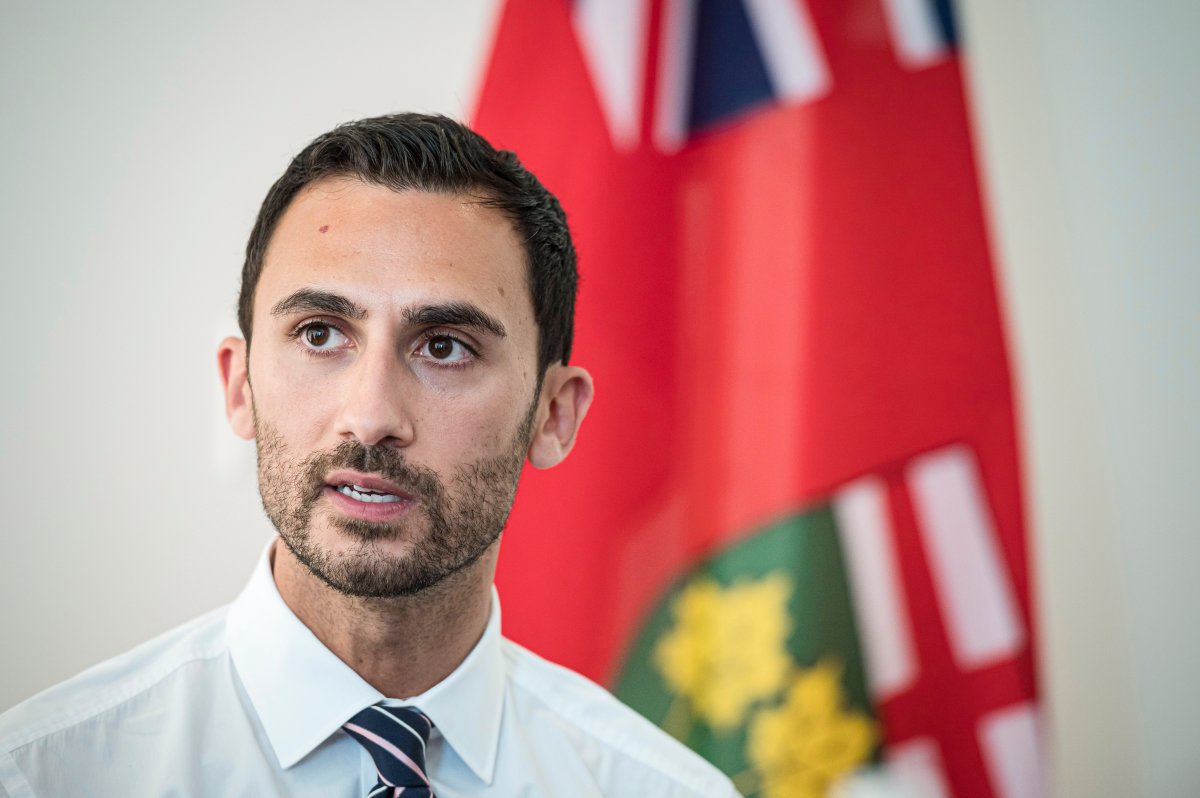TORONTO – The union representing Ontario‘s high school teachers described a proffered olive branch as a poison pill on Thursday, saying the government only told half the story when it offered to partially walk back a proposed increase to class sizes.

The president of the Ontario Secondary School Teachers Federation confirmed that the Progressive Conservative government had offered to lower the average funded class size from 28 to 25 as part of its labour negotiations with the union.
But Harvey Bischof said Education Minister Stephen Lecce failed to mention another clause contained in the offer which would see the government remove all reference to class size limits, essentially allowing the province to see the number of students per class climb indefinitely.
“The 25 provides funding to hire a certain number of teachers,” Bischof explained at a news conference. “It provides no safeguard for the highest number that any class could go to.”
Bischof said he sees “no upside” to the governments latest offer, which Lecce announced publicly on Thursday afternoon.
The move marked yet another reversal for the government of Progressive Conservative Premier Doug Ford, but does not return maximum class sizes to 22 – the level in place before the Tories launched sweeping education reforms in March.
- Michael Kovrig reflects on ‘brutally hard’ Chinese detention: ‘You’re totally alone’
- Conservatives set to table non-confidence motion Tuesday. What to expect
- After controversial directive, Quebec now says anglophones have right to English health services
- Something’s fishy: 1 in 5 seafood products are mislabelled, study finds
Lecce described the offer to set average class sizes at 25 as a gesture of good faith towards the OSSTF, one he said the union has spurned by pursuing measures that could put members in a legal strike position.

Get breaking National news
“The government again has made a significant enhancement, yet on the day we made that offering, the union has decided to escalate at a time that parents want us all to work together to keep kids in class,” Lecce said.
Earlier this year, the government ordered school boards to start increasing class sizes, moving to an average for high school from 22 to 28 students over four years. Class sizes for grades 4 to 8 will increase by one student per classroom, from 23 to 24.

Ontario’s Financial Accountability Officer has said the move would result in 10,000 fewer teachers in the public school system over the next five years.
The issue of class sizes is one of several creating tension as the government and the union work towards striking a new labour deal.
Contracts with all of the province’s education workers expired at the end of August, and the government has been embroiled in testy negotiations with all of the province’s education unions since the school year began.
It narrowly averted a strike with the Canadian Union of Public Employees, representing 55,000 workers such as custodial staff and teaching assistants.
Both the OSSTF and its counterpart representing elementary school teachers have all sought conciliation as labour talks continue.








Comments